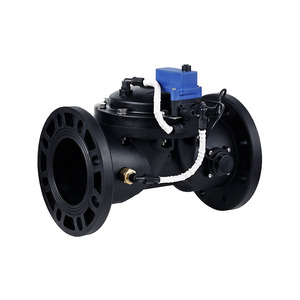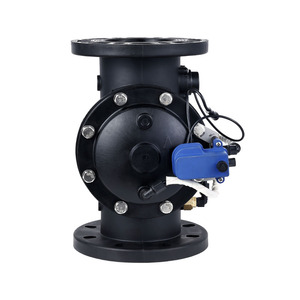
All categories
Featured selections
Trade Assurance
Buyer Central
Help Center
Get the app
Become a supplier

(799 products available)













































A flush mount tire valve stem is an automotive component that allows air to be pumped into and out of the tires. The design of this component is slightly different from the conventional tire valve. While the conventional valve sticks out like a mushroom, the flush mount valve is level with the tire's surface. This makes it a preferred option for high-performance vehicles. However, its main advantage is that it reduces the risk of the valve getting damaged or broken when the tire is in contact with the ground. The flush mount tire valve comes in different types, depending on the orientation and mounting style.
Flush fit tire valve stem cap
This type of cap is designed to fit perfectly and seal the tire, preventing air loss. It has a rubber gasket that ensures a tight seal. The flush cap is used in high-performance racing vehicles. It helps to maintain optimal tire pressure, ensuring peak performance. The flush fit tire valve stem cap is distinguished by its unique shape, which resembles a flat disc. It comes in different materials, including aluminum, brass, and plastic. The size also varies, with diameters measuring 8 to 10 mm.
Flush mount tire valve extender
This component makes it easier to access the tire valve without having to bend down. It is especially useful for large trucks and SUVs. The valve extender is usually made of brass or chrome-plated brass. Some models come with a 90-degree angle to ensure an easy fit. The sizes may vary, with lengths measuring from 3 to 10 cm. The opening diameter is about 6.5 mm, allowing a perfect fit on most tire valve stems.
Flush valve kit
Manufacturers sell tires with the flush mount valve already installed. However, it is always a good idea to have a flush valve kit. The kit contains all the necessary components in case the valve is damaged, and the flush mount valve conversion is required. Typical components include a valve body, core, cap, rubber grommet, and washer. They come in different sizes to accommodate various tire sizes.
After understanding the importance of a proper valve stem in tire performance, it is crucial to get the right information on how to maintain it in good condition. Here are specifications and maintenance tips that can help do that.
Size
Flush tire valve stems come in different sizes. They are measured in inches or millimeters based on their length. It is important to choose the right size for each specific car to ensure proper fit and function.
Material
They are commonly made of brass or stainless steel. Brass is the most used material for traditional valve stems. It resists corrosion and is durable. Stainless steel is more common in modern flush mount valve stems. It is stronger, more corrosion-resistant, and provides a sleek, polished look.
Thread Size
Flush valve stems have different thread sizes. This is done to ensure compatibility with various types of wheels and adapters. The most common thread sizes are 1.25 inches - 1.50 inches.
Finish
They also come in different finishes, such as chrome, nickel, and brass. Chrome and nickel finishes provide a shiny, polished look and are also corrosion-resistant. Brass has a natural, warm golden color but can tarnish over time without proper maintenance.
Length
Flush valve stems are available in a variety of lengths. They are measured from the base where it meets the wheel to the top where the cap screws on. Common lengths range from 1.5 inches to 4 inches. The desired length depends on the type of wheel used and personal preference.
Proper maintenance of the flush mount tire valve stem is necessary to ensure its durability and function. Here are some of them:
Wholesale buyers should consider several factors when purchasing flush-mount tire valve stems for resale. They include the following:
Compatibility
Buyers should ensure the valve stems are compatible with standard tire sizes and types. They should match the specifications suitable for common applications flush rims on aftermarket wheels.
Material
Buyers should purchase valve stems made from durable materials like stainless steel or brass. They should be resistant to corrosion and wear from harsh environmental conditions and road debris.
Security
Flush-mount tire valve stems are often secure as they reduce the risk of damage. Buyers should look for models that offer security features such as lock mechanisms to prevent theft and tampering.
Quality and Reputation
Buyers should source durable tires from reputable manufacturers. They should conduct research to find companies known for quality products and reliable customer service.
Easy Installation
Buyers should find stems that are easy to install. They should look for models with straightforward designs and come with installation kits or instructions.
Warranty
Business buyers should purchase valve stems that come with manufacturer warranties. The warranty is a quality assurance and offers protection against material or manufacturing defects.
Price
Buyers should find valve stems that fit their budgets while still maintaining quality. They should compare prices from various suppliers and find products with a good return on investment.
Here’s a step-by-step guide on how to replace a flush valve tire stem.
Remove the tire
To replace the valve stem, the first step is to remove the tire from the wheel. This can be done using a jack to lift the vehicle and a lug wrench to remove the lug nuts. After loosening the lug nuts, the vehicle is raised with a jack, and the lug nuts are completely removed. After that, one side of the tire is pried away from the rim using a tire iron or a similar tool. Once one side is detached, the tire is completely removed by pulling it off the rim.
Remove the old valve
Once the tire is removed, the old valve is removed from the rim's hole using a wrench or pliers. A valve core remover tool can be used to remove the valve core, allowing any remaining air to escape from the tire. The remaining air is drained by pressing down on the valve core remover tool.
Prepare the new valve
Before installing a new valve, cleaning the rim where the valve mounts is important. After that, the new valve is prepared for installation by applying a bead of tire lubricant or soapy water to the valve base to help create a better seal.
Install the new valve
The new valve is inserted into the rim's hole from the inside of the wheel. A washer and nut are then placed onto the valve from the outside of the rim and tightened securely. This helps to hold the valve in place and prevent air leaks. The valve is then tightened with a wrench until it feels snug, being careful not to overtighten and crack the rim.
Reinstall the tire
Once the new valve is installed, the tire is mounted back onto the wheel. The tire is first lubricated on the bead, making it easier to install. After that, the tire is aligned with the wheel, and one edge of the tire is slipped over the rim. The other side of the tire is then pushed onto the rim using a tire machine or by hand, ensuring the tire bead seats properly on the valve side. The tire is inflated to the recommended pressure, checking for any air leaks around the valve.
Q1: How long do flush-mount tire valve stems last?
A1: A well-maintained flush-mount tire valve stem can last for many years. However, its longevity can be affected by several factors. These include the quality of the valve stem, environmental conditions, and how well it is taken care of.
Q2: Can one extend the flush tire valve stem themselves?
A2: It is not recommended. Extending a flush-mount tire valve stem is not an easy task. The process involves removing the valve stem from the wheel rim and then installing an extension kit. This requires special tools and expertise to avoid damaging the valve.
Q3: What tools are required to replace a flush tire valve stem?
A3: Only a few tools are needed to replace a flush-mount tire valve stem. These include a tire pressure gauge, tire valve tool, and towel. A tire inflator or compressor may also be needed to inflate the tire after the valve stem replacement.